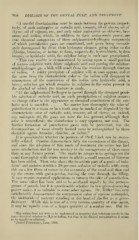Page 898 - My FlipBook
P. 898
908 DISEASES OF THE DENTAL PULP, AND TREATMENT.
"A careful discrimination must be made between the powers, respect-
ively, of such antiseptics as carbolic acid, creasote, oil of cloves, oil of
thyme, oil of cajeput, etc., and such other antiseptics as chlorine, bro-
mine, and iodine, which, in addition to their antizymotic power, are
true chemical antagonists of those sulphuretted-hydrogen compounds
of which putrefactive gases are constituted, such gases being immedi-
ately decomposed by them, their hydrogen element going either to the
chlorine, bromine, or iodine, to form, respectively, hydrochloric, hydro-
bromic, or hydriodic acids, the sulphur being in each case precipitated.
" This can readily be demonstrated by acting upon a small portion
of ferrous sulphide with dilute sulphuric acid and passing the sulphur-
etted-hydrogen gas which will result from the reaction through tincture
of iodine. A milky precipitate of sulphur will at once appear, and at
the same time the characteristic color of the iodine will disappear in
consequence of the conversion of the iodine into hydriodic acid, a
heavy, colorless gas which remains in solution in the water present in
the alcohol of which the tincture is made
" If the sulphuretted hydrogen is passed through the strongest possi-
ble solution of carbolic acid, no such precipitation of sulphur occurs;
no change either in the appearance or chemical constitution of the car-
bolic acid is manifest No matter how thoroughly the odor of
putrefaction in a room or in a tooth may be masked or disguised by the
characteristic odor of carbolic acid, creasote, oil of cloves, or, indeed,
any antiseptic oil, the gases are none the less present, although their
odor is neutralized ; the disinfection is only apparent, not real. The
further formation of putrefactive gases may be prevented, but the
decomposition of those already formed must be accomplished by those
chemical agents bromine, chlorine, or iodine."
It is questionable whether the position of Prof. Litch can be sucess-
fully refuted. Practice demonstrates fully the correctness of the theory,
and since the adoption of this mode of treatment the writer has had
more satisfaction and far less anxiety in the management of these cases
than at any former period. The mode he adopts is to syringe out the
canal thoroughly with warm water to which a small amount of listerine
has been added. Then take about the twentieth part of a grain of iodo-
form^ and moisten it with a 20-per-cent. solution of carbolic acid; carry
tills on a few fibres of cotton to the extremity of the canal and then seal
up the crown with gutta-percha, leaving the vent through the filling.
It may require repeated applications to remove the odor of iiutrefaction.
The same effect has been said to be produced rapidly by the perman-
ganate of potash, but it is questionable whether its low germ-destroying
power makes it as valuable as some other agents. Dr. Miller^ has very
satisfactorily demonstrated the comparative value of various antiseptics,
the bichloride of mercury standing at the head of the list as a germ-
destroyer. Wliile this is true of a very minute quantity of this agent,
it may be equally true of a larger quantity of a weaker one. But in-
' The writer does not wish to be understood as asserting that iodoform stands in the
same chemical relation to II.^S as iodine, but that in its clinical presentations it seems
to he e(|ually as etlectual.
'^Denial Practitioner, June, 1884.


